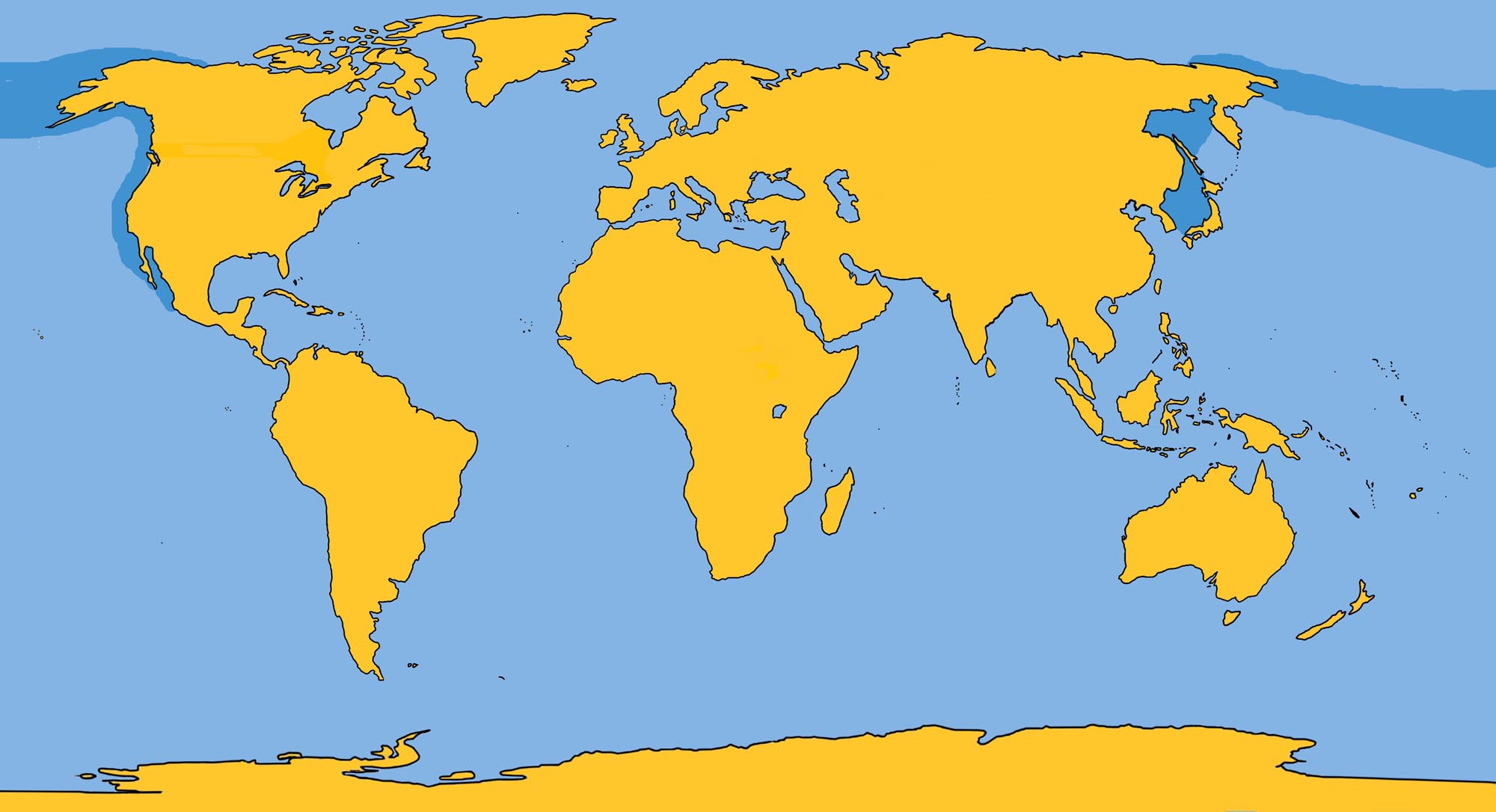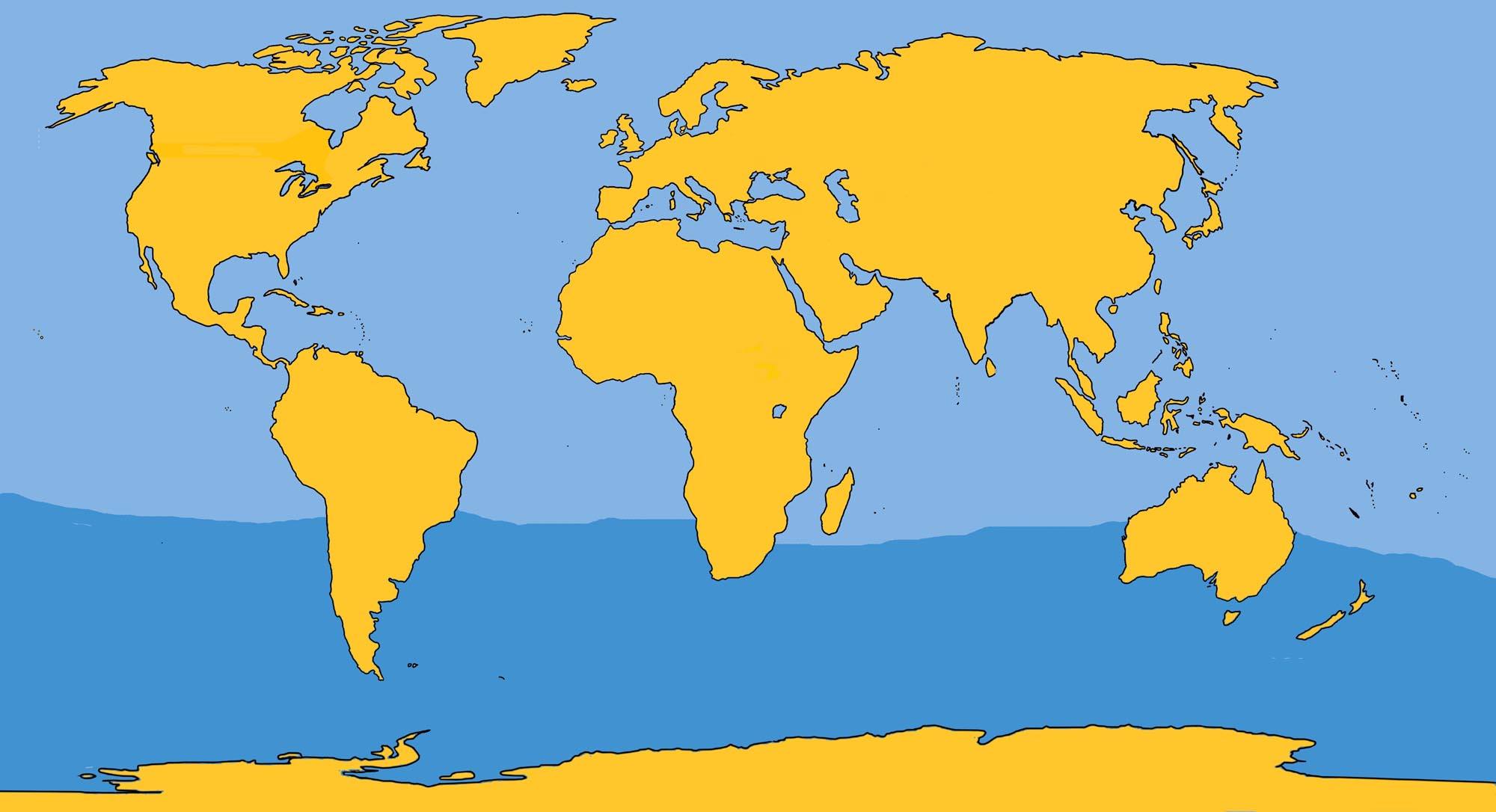NORTHERN BOTTLENOSE WHALE (Scroll down for southern bottlenose whale)
Family: Ziphiidae
Genus: Hyperoodon
Species: H. ampullatus (Forster, 1770)
As with several other varieties of cetaceans, the northern bottlenose whale has a counterpart in the Southern Hemisphere which, but for subtle differences, appears to be an identical animal. They may very well be conspecifics divided into northern and southern populations since the last ice age.
Northern bottlenose whales have been hunted for hundreds of years. They are extremely protective of other members of the herd, a trait the whalers found useful. Wounding one animal would bring others into harpoon range so that the entire herd could be taken.
The bottlenose whale is characterized by an abrupt, rounded forehead, or melon, the primary function of which is doubtless for echolocation.
Physical Description: They have a bulbous forehead, more pronounced in males than in females, which grows larger as the animal ages; the rostrum is well developed. The body is long and comparatively thin; the eyes are very small.
Color: Juveniles are completely dark brown to black, becoming lighter as they age. Very old animals are white with gray-white patches covering the dorsal and flank regions. The flippers and flukes remain brown and are always darker on both sides than the darkest body color.
Fins and Flukes: The pointed, falcate dorsal fin is located well to the rear of the mid-back region, is extremely well developed and may reach 15 in (38 cm) in height. The flippers are small and pointed at their tips. The flukes are wide and somewhat pointed, with no median notch.
Length and Weight: Males reach a known length of 32 ft (9.8 m); females are slightly smaller.
Teeth: One pair of teeth is located in the tip of the lower jaw; they may not erupt even in mature animals, and they may fall out in older ones. Sometimes a second pair is located behind the first. There are no teeth in the upper jaw. The teeth do not erupt in females.
Feeding: Squid is their primary food.
Breathing and Diving: These animals remain on the surface breathing for about 10 minutes prior to a lengthy dive. The blow, about 6 ft (1.8 m) tall, is visible for about 300 ft (90m). They may remain submerged for over an hour. These animals are often seen leaping high out of the water in repetitive leaps.
Mating and Breeding: Mating is thought to take place in the spring with 10 ft (3 m) calves born after a gestation period of 12 months. Calving intervals is 2 to 3 years. Males are sexually mature at about 24 ft (7.3 m); females at 22 to 23 ft (6.7 to 7 m).
Herding: The average is 10 to 15 animals, but sometimes herd number as many as 25.
Distribution: They are found in the North Atlantic from Davis Strait and Novaya Zemlya, southwest to Rhode Island.
Migration: North in the spring; south to the Azores and Mediterranean Sea in July.
Natural History Notes: These are very inquisitive animals and accounts of them approaching boats are not unusual.
NORTHERN BOTTLENOSE WHALE DISTRIBUTION
SOUTHERN BOTTLENOSE WHALE
Family: Ziphiidae
Genus: Hyperoodon
Species: H. planifrons Flower, 1882
Living mainly in the southern oceans, far from shipping lanes, the southern bottlenose whale, unlike its northern counterpart, is rarely observed in the wild. It has never been subjected to systematic whaling, and is known only from about a dozen specimens.
Note: Information identical to northern bottlenose whale, except where noted.
Physical Description: Slightly smaller than northern animals, with larger, more bulbous forehead and more prominent dorsal fin.
Length and Weight: These whales reach about 32 ft (9.8 m); females reach about 24.5 ft (7.5 m).
Teeth: A single pair of prominent teeth projects from the tip of the male’s lower jaw. No teeth are present in the upper jaw. The teeth do not erupt in females.
Feeding: Known to feed on squid..
Breathing and Diving: These animals remain on the surface breathing for about 10 minutes prior to a lengthy dive. The blow, about 6 ft (1.8 m) tall, is visible for about 300 ft (90m). They may remain submerged for over an hour.
Mating and Breeding: No information available.
Herding: Groups are apparently small — 2 to 12 animals.
Distribution: Southern Ocean; known from Australia, the Falkland Islands, South Georgia, the South Orkney Islands, South Africa, and off the coast of Antarctica in the Pacific and Indian Ocean sectors.
Migration: North toward the tropics in winter; south during summer.
SOUTHERN BOTTLENOSE WHALE DISTRIBUTION










